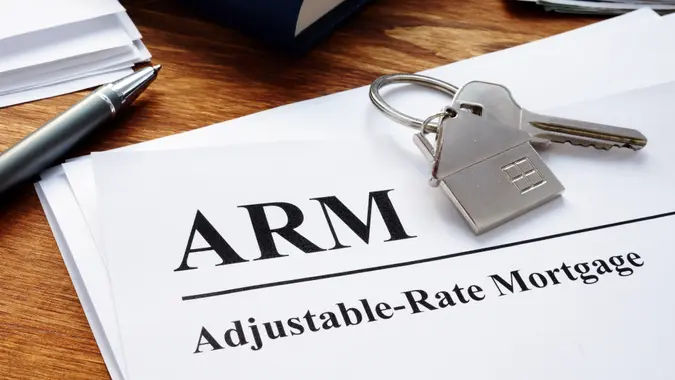When to Refinance with an Adjustable Rate Mortgage
Commitment to Our Readers
GOBankingRates' editorial team is committed to bringing you unbiased reviews and information. We use data-driven methodologies to evaluate financial products and services - our reviews and ratings are not influenced by advertisers. You can read more about our editorial guidelines and our products and services review methodology.

20 Years
Helping You Live Richer

Reviewed
by Experts

Trusted by
Millions of Readers
Potential home buyers not only need to decide on where and what they are going to purchase but how they are actually going to finance the transaction. With the variety of mortgages out there, the options may seem overwhelming and confusing. One thing that can help with the decision making process is conducting appropriate research on the different mortgage types, and then figuring out how it may work best for you. One such option available are adjustable rate mortgages (ARMs).
ARMs are a type of long term loan where the financial institution will offer borrowers lower rates than the national average for a traditional fixed rate mortgage. The reason for the discounted rate is twofold as the rates will reset and can go up or down during the lifetime of the loan and the borrower is assuming the risk, not the mortgage provider.
Getting the most out of an adjustable rate mortgage is influenced by a couple of conditions, one is the market and the other is your long term plan. If you are considering refinancing your current mortgage with an ARM, you must do so as a way to hedge your bet.
For example: If you committed to paying 8.5% on your loan, and you commit to an ARM with 7%, you must be doing so as your belief is that the rates will continue to decline and you will get even lower mortgage interest rates.
Your long term plans are also a huge consideration when refinancing with an adjustable rate mortgage. If you plan on only being in your home for a couple of more years and want to save the most money during that time period, the starting interest of an adjustable rate mortgage should be lower then that of a traditional fixed rate mortgage.
Those with fair credit scores often do not have a choice but to refinance with an adjustable rate mortgage. But that may not be bad news. If by accepting the terms of your new ARM, watching the calendar closely for readjustment periods and working diligently by making all the payments on time to improve your credit score in between, you may be able to use this experience to your advantage. If after a couple years of effort and the long term goal of staying in your home for a long period of time, you can then refinance into any type of mortgage you desire.
 Written by
Written by 
























